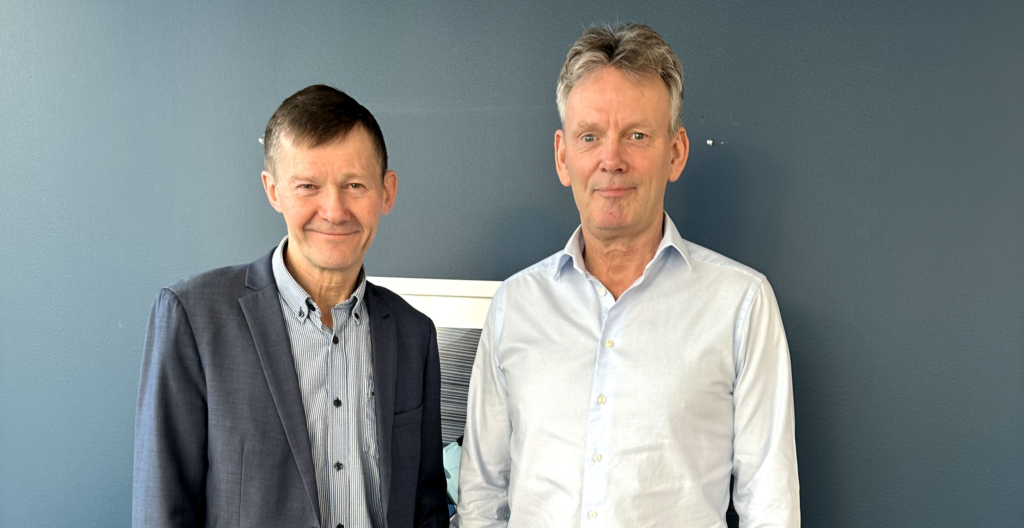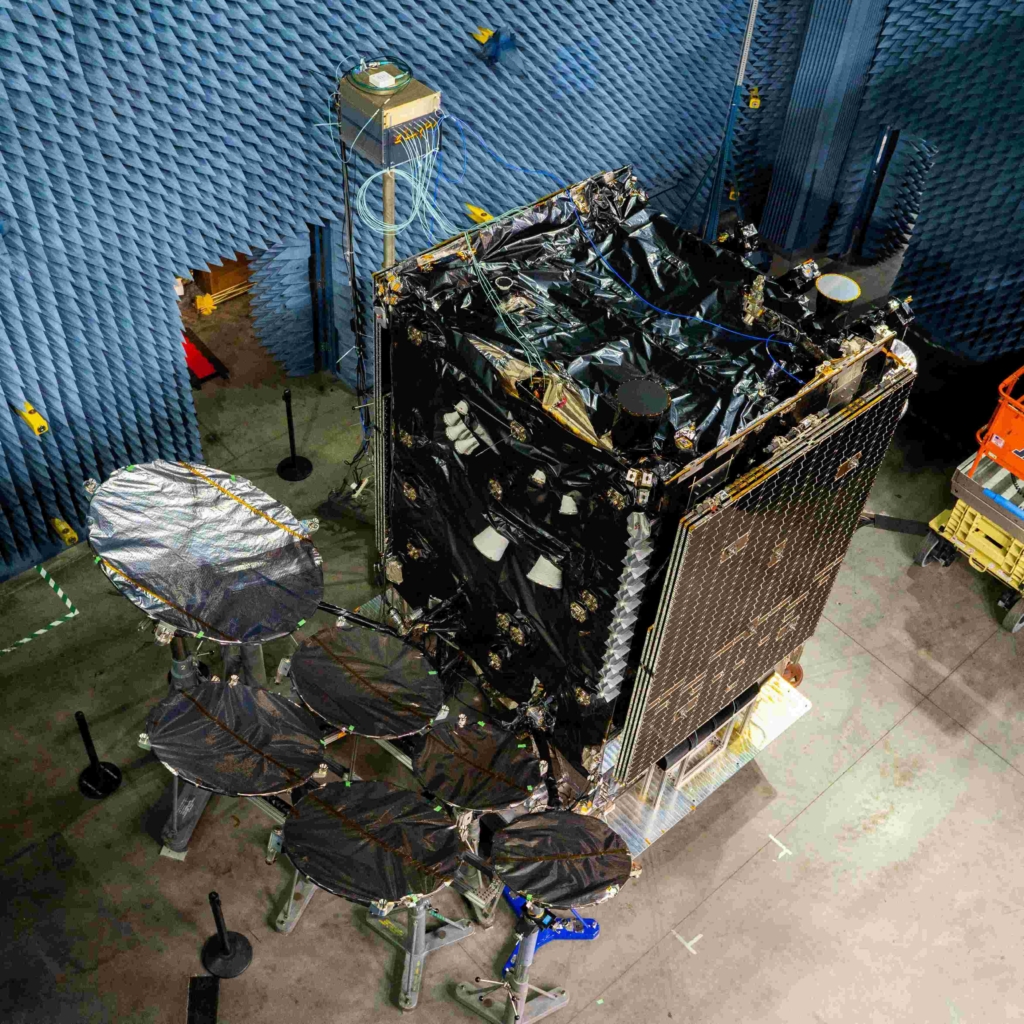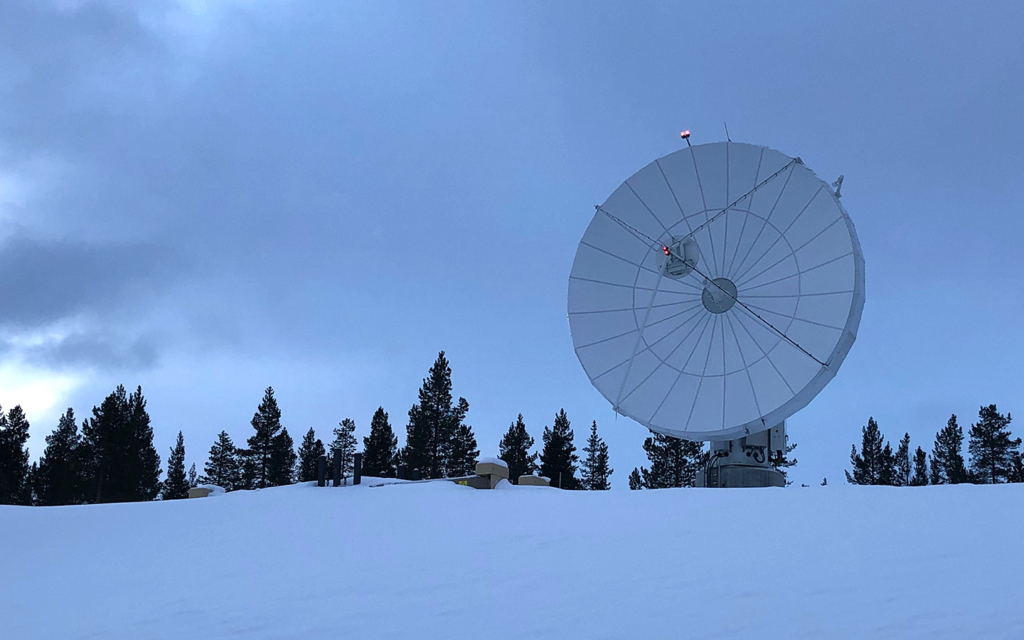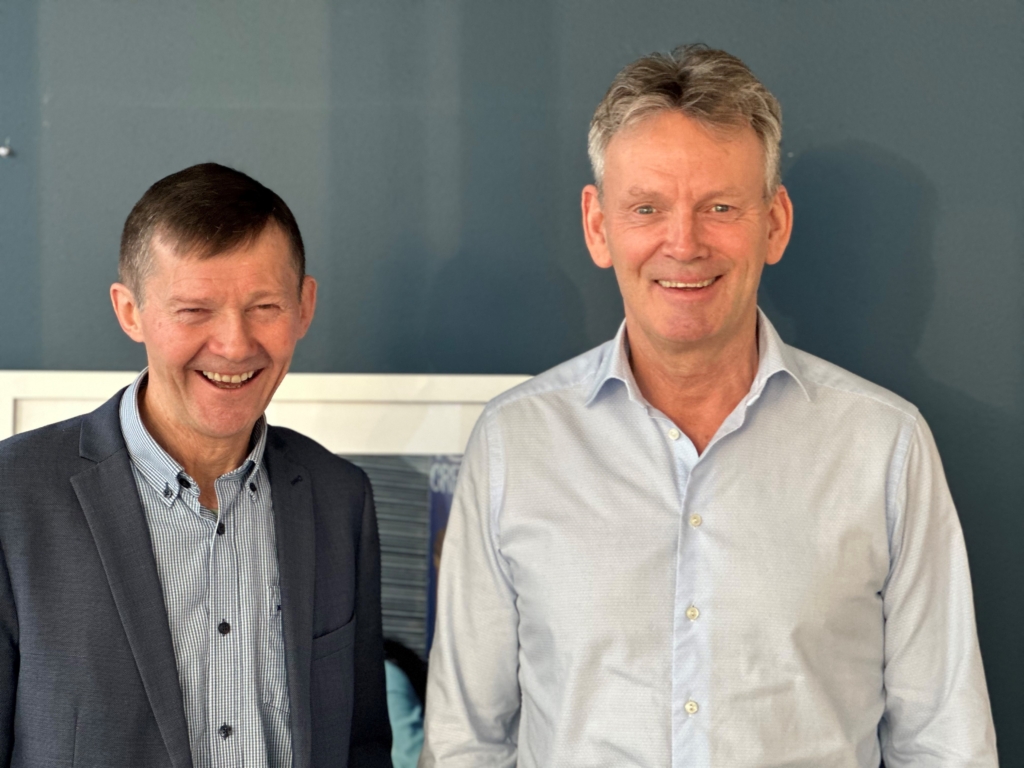The board of Space Norway Group has appointed Morten Tengs as acting Chief Executive Officer (CEO) for the Space Norway group, effective from June 1 of this year. He transitions from his previous role as CEO of Telenor Satellite. Dag H. Stølan, current CEO of Space Norway, will assume a new position as Executive Vice President of the company.

"With the acquisition of Telenor Satellite, the Space Norway group has become the largest satellite operator in Northern Europe. The company plays a pivotal role in the Norwegian space industry and is a major international satellite operator, and it is a goal for Space Norway to be a driving force in the further development of Norwegian and international satellite industry. Against this backdrop, I have recommended to the board that Space Norway should change its senior management. I am pleased that Morten Tengs will lead the group until a new permanent CEO is appointed," says the outgoing CEO Dag H. Stølan.
Morten Tengs has been leading Telenor Satellite since 2013. He will be replaced by Peter Olsen, who until now has served as the Director of Business Development at Telenor Satellite.
"I have accepted the position of interim CEO for the Space Norway group and look forward to building on the strong foundation that Dag H. Stølan has established," says Morten Tengs.
18/04/2024
Space Norway to change corporate functions
Effective April 18, Martin Foss will assume the role of Group Chief Financial Officer (CFO) within the Space Norway group. Foss joins from his position as CFO at Telenor Satellite.
At the same time Gro Undrum will take on the role of Group CHRO and Director of administrative functions.
Torstein Losnedahl, previously Contract Manager in Space Norway, will join the group management team as Group Chief Legal Officer (CLO). He will be responsible for legal and regulatory matters throughout the group.
Geir Anders Varanes, currently the IT leader at Telenor Satellite, will henceforth be responsible for IT within the group.
"Space Norway has significantly expanded its presence in the Norwegian space industry with the acquisition of Telenor Satellite. Therefore, it is natural to evolve key functions, and I am very pleased that we are building and developing the group further with internal talent," says Dag H. Stølan, CEO of Space Norway.
17/04/2024
Near Field Range test – Reaching one of ASBM’s last major milestones
One of the final major milestones in the test regimen for our two ASBM satellites is complete. Near Field Range testing involves measuring the radio raditation diagrams from the antennas. This test is conducted as an integral part of the Final Integrated System Test (FIST).
FIST verifies that all systems are functioning as they should and have not been damaged after the two major tests, TVAC and dynamic tests, which subject the satellites to the same conditions as they will experience during launch and in their orbit in space.
During TVAC and dynamic testing, the antennas and solar panels are not deployed since they are folded together during launch. Therefore, functionality is tested on these essential components during FIST.
Antennas aboard a satellite receive and transmit signals, and before they are launched, tests are conducted to make sure the antennas do transmit signals to their exact intended destinations (read more about antennas and payloads here). When a satellite orbits as far out as 43,000 kilometers in space, the antennas cover a large area on Earth, and even a small deviation in the direction of the beam will result in significant variations in signal strengths across the covered areas.
Although the signals transmitted and received come from thousands of kilometers away, it is possible to measure the antennas inside a small room. Antennas operate on many different frequencies, and to conduct a proper test, it is important to avoid interference. Interference can occur either externally or by signals being reflected back from walls, ceilings, or other objects. Therefore, the antennas are tested in a chamber where the walls and ceiling are covered with pyramid-shaped structures that resemble the inside of an egg carton. When a signal is transmitted toward such a wall, the signal is absorbed into the pyramids instead of being reflected back as it would from a regular flat wall. The test is conducted by transmitting signals from the antenna to a movable receiver placed in front of the antenna, thereby verifying that the communication pattern is correct.
The next time the antennas will be tested is during In Orbit Testing (IOT) after launch, where the signals will be compared with all previous tests to ensure that everything is functioning as planned.

Compatibility-test for the ASBM satellites – getting close to launch
The ASBM program conducted the important compatibility test for ASBM-1 last December 2023. This is a verification test for communication between the ground system and our two large ASBM satellites.
The test is divided into two parts. Both the satellite provider Northrop Grumman and HEOSAT test communication between their respective control rooms and the satellites, to ensure that both parts function both during launch and when the satellites are deployed after testing in space.
During the construction of the satellites and payloads, all physical parts and software have been tested in various ways, many times. First individually, and then as a complete system. The tests in the Satellite Operation Center (SOC) have been performed in a satellite simulator, which is a digital copy of the ASBM satellites. During this important compatibility test, the SOC is directly connected to the satellites to receive telemetry and send commands for the first time. The operations center is tested together with the actual satellite, with actual radio signals.
Our two ASBM satellites are in the final stages of the many tests required before launch. One of the final tests is the Near Field Range test (NFR) where the beam patterns from the antennas are measured. While this test is ongoing, the compatibility test is also conducted. The reason the compatibility test is done while the satellite is in NFR is that when the satellites are finally in operation, all communication is done via radio signals.
Ranging is tested, meaning that by using radio signals sent from the ground segment, the satellite's location is known at all times. The test ensures that the satellite is able to deliver telemetry to the SOC, and finally, it is ensured that commands can be sent to the satellites and that they can receive and execute what they are asked to do. As with the end-to-end test, all hands were on deck for this important event. Teams from both Space Norway, the satellite provider Northrop Grumman, KSAT, and our customers; the Norwegian and US Armed Forces as well as Viasat, were active in their parts of the ground network to verify data reception and report deviations for two consecutive days. Coordinating all these actors is in itself a major task, and in the compatibility test, the entire operation is tested on cooperation, data flow, and deliveries. The compatibility test against the ASBM2 satellite was conducted early in March while it was in Near Field Range, and with this, an essential milestone for the entire ASBM program has been reached.
Both the ground segment and the satellite team can start looking forward to launch!

04/01/2024
The acquisition of Telenor Satellite has now been finalised
In November, it was announced that Space Norway is acquiring Telenor Satellite. On January 4, 2024, the final documents were signed and Telenor Satellite is now a part of Space Norway group.

It was in Nowemver 2023 that is was known that Space Norway was buying Telenor Satellite from Telenor.
"With this acquisition Space Norway group is the largest and leading satellite environment in Norway. We are also a significant satellite operator in Europe," says CEO Dag H. Stølan.
In order to acquire Telenor Satellite, Space Norway needed the Norwegian Parliament's approval to provide the necessary equity. Just before Christmas 2023, the Parliament provided Space Norway with equity.
Positive to acquisition
According to Telenor Satellitess CEO, Morten Tengs, the acquisition is a positive development for Telenor Satellite.
«We are pleased to be part of Space Norway. We are excited to bring our industry experience and expertise to the table”, says Tengs.
He emphasizes that Space Norway has some of the most innovative projects in this industry.
“Together, we will continue to develop the Norwegian space sector as well as serve our clients throughout the Nordics and EMEA”, he concludes.
Finances with equity
Financed with equity, the government provided capital to Space Norway to finance the purchase of Telenor Satellite.
"We have had good cooperation with the Ministry of Trade, Industry and Fisheries in the acquisition process. Now that we have ownership of Telenor Satellite, it provides new and significant opportunities for development and growth for Space Norway," says Stølan.
Ambitions for the future
Space Norway's CEO has ambitious plans for the future of the group. You can read more about it in "High Ambitions for Norwegian Space Activities | Space Norway."
According to Stølan, this purchase strengthens Norway's capability for satellite services. "In addition, this is clearly positive for the Norwegian space industry," says Stølan. The new organization will consist of around 170 employees located in the Oslo area and Tromsø. The transaction is valued at 2.36 billion Norwegian kroner on a cash and debt-free basis.
Facts about the two companies
Space Norway manages and develops strategically and safety-critical space infrastructure that important for Norwegian societal needs.
Telenor Satellite is a leading European provider of satellite TV broadcast and VSAT data communications services for maritime and land-based sectors.
18/12/2023
Space Norway participated at ITU WRC-23 in Dubai
Space Norway was participating in the ITU World Radio Conference in Dubai. WRC-23 ran over four weeks in November and December and is the culmination of several years of preparatory work within the International Telecommunication Union (ITU).

Opening Plenary
WRC-23 addressed necessary revisions of the Radio Regulations (RR), an international treaty between the 193 United Nations member states making up the ITU, on the use of the radio spectrum and coordination rules to provide access to it.
The conference, which convenes approximately every four years, was this time gathering more than 3.000 delegates in Dubai aiming to discuss and seek consensus on more than 40 different topics.
Impact the future of global communication systems
The decisions made at the ITU WRC are crucial as they impact the future of global communication systems, technology innovation, and the spectrum availability for various services. Satellite operators, telecommunications companies, regulatory bodies, and governments worldwide participated to ensure their interests were represented and contributed to shaping the future of radiocommunications.
There were three important overall reasons for participating in the ITU World Radio Conference:
- Spectrum Allocation: The ITU World Radio Conference plays a critical role in determining international spectrum allocations for various services, including satellite communications. Participating in the conference allows Space Norway to advocate for and secure spectrum allocations that are crucial for their satellite operations. This participation ensures access to specific frequency bands necessary for their satellite services, enabling efficient and interference-free communication.
- Policy Influence and Networking: Attending the conference provides Space Norway with the opportunity to engage with global stakeholders, including regulators, industry experts, and other satellite operators. Participating in discussions, presenting technical findings, and contributing to policy debates can help shape international regulations and policies concerning satellite communications. Building relationships and networks within the industry can also lead to potential collaborations and partnerships.
- Keeping Abreast of Technological Developments: The ITU World Radio Conference serves as a platform to stay updated on the latest technological advancements, trends, and innovations in the field of satellite communications. Space Norway can gain insights into emerging technologies, best practices, and future opportunities. This knowledge can be instrumental in guiding their strategic planning, investment decisions, and the development of new satellite systems that align with evolving global standards and technologies.

The Norwegian WRC-23 delegation with Space Norway represented by Christer Varan and Lars Løge.
Discussions relating to the operation of non-geostationary satellites
By actively participating in the ITU World Radio Conference, Space Norway can ensure that its interests are represented, its operations are supported by favorable regulations, and that it remains at the forefront of technological advancements in the satellite industry.
Most important to Space Norway were the discussions relating to the operation of non-geostationary satellites and related services as pertaining to ITU Resolution 35, which directly relate to conditions and requirements to which the Arctic Satellite Broadband Mission must adhere.
But Space Norway also had interests in topics relating to such topics as VHF Data Exchange System (VDES), Narrowband IoT (NB-IoT) and Earth Exploration-Satellite Services (EESS) such as satellites utilizing Synthetic Aperture Radars (SAR).
16/11/2023
Space Norway acquires Telenor Satellite
With this acquisition, Space Norway becomes the leading environment for satellite operations in Norway as well as a considerable European satellite operator. The transaction provides Norway with an enhanced national ability within satellite services and paves the way for growth and new satellite projects. A strong Norwegian satellite operator signifies opportunities for the entire national space industry.
Satellites are becoming increasingly important. Numerous essential and critical functions depend on satellites, such as search and rescue, communication, and monitoring of maritime traffic in Norway's ocean waters.
“I see great business opportunities ahead. Combined pro forma turnover for these companies in 2022 was approximately NOK 1.8bn, with an EBITDA of approx. NOK 875 million and an order backlog of approx. NOK 13bn. Adding Telenor Satellite, the new company becomes a robust knowledge hub and a significant satellite environment. The process of acquiring a new satellite in the Thor series will start at once,” says CEO Dag Stølan at Space Norway.
“We are looking forward to becoming part of a strong company where satellite operation is core business, and together we will become the premier space environment in the country. Space Norway has some of the most innovative projects in this industry and we are excited to bring our knowledge and competence to the table,” says CEO Morten Tengs at Telenor Satellite.
“The Government will propose to the Parliament to issue equity to finance the acquisition of Telenor Satellite. The transaction will contribute to the establishment of a major Norwegian satellite operator which, together with a growing Norwegian space industry, can strengthen Norway as a space nation. At the same time, the acquisition ensures that Norway, in a time of increasing geopolitical unrest, maintains control over satellites crucial for critical societal functions and strategically important for the country,” says the Norwegian Minister of Trade and Industry, Jan Christian Vestre.
Telenor divests its satellite operations with this transaction, but will still need satellite capabilities. It has signed a letter of intent with Space Norway outlining continued cooperation on new satellite services.
“Telenor will no longer operate satellites and we will focus on our core business. We are confident that Space Norway is the best possible owner to further develop Telenor Satellite. The letter of Intent ensures continuity and quality in our customer services,” says EVP Dan Ouchterlony at Telenor.
The new organization will consist of approximately 170 people stationed in the Oslo area and in Tromsø. The transaction is valued at NOK 2,36 bn and is dependent on an equity issue approval by the Norwegian Parliament.
14/11/2023
Setting High Goals for Norway’s Space Efforts
“Space Norway aims to be a key player in Norwegian space activities. My ambition for Space Norway is to be a leading part of the development of Norwegian space operations," says Dag H. Stølan, CEO of Space Norway.
According to Stølan, Norway has been a pioneer in utilizing space capabilities to meet societal needs.
"With years of experience in the industry, a deep understanding of technology, and a clear mandate from the Norwegian state, we're poised to drive satellite development and advance space systems in Norway," Stølan explains.
Stølan emphasizes that Space Norway plays a crucial role in supporting national security.
"We're responsible for developing and managing space services for use by government agencies and society at large."
Strong Foundation for Further Growth
Historically, Space Norway has been a relatively small company in terms of its workforce. "Over time, we've grown in the number of highly competent employees, giving us a strong foundation for further growth," says Stølan.
He refrains from discussing specific future plans.
"While I can't provide details yet, we have exciting things in progress," he promises.
Commitment to Innovation
Stølan is committed to ensuring that Space Norway is a reliable service provider.
"We aim to meet customer expectations, building trust and proving ourselves worthy of it."
Stølan highlights Space Norway's priorities, promising a continued emphasis on innovation in close dialogue with potential customers.
He assures that Space Norway's vision shapes the company's future.
"Our vision is to deliver advanced space systems that meet the needs of Norwegian society. We're dedicated to making this vision a reality."
31/10/2023
Rocking our satellites – ASBM in concert
Pounding loudspeakers and blaring vibrations – Space Norway has sent its ASBM satellites to a rock concert in order to simulate the conditions they will be subjected to during launch. In other words, the satellite has been through an important dynamics test.
Space Norway’s two large ASBM satellites that will be launched in mid 2024, are in a very important test phase. Both have successfully come out of the thermo vacuum test, and the first one is out of the dynamics test. Space Norway has chosen to launch the two satellites using a Falcon 9 rocket, and consequently the test parameters are based on exactly the same sound characteristics as this rocket has.
The satellites go through the dynamics test to make sure the mechanical design is good enough to withstand the extreme conditions inside the rocket fairing during launch. The craftmanship, together with the analyses made during building, are put to the test. Are they solid enough, have the analyses held up? To make it as realistic as possible, the test is done with the solar panels and the reflectors folded, like they will be during launch. These are paid close attention to during testing, to make sure they don’t move or twist and losen or damage some of the equipment.
The dynamics test has three phases; acoustic, vibration and shock. The testing starts carefully with increasing intensity until maximum agreed vibration is reached. Those of us who have seen rocket launches on TV have seen a lot of smoke and flames during take-off, and it is easy to imagine how severely the shaking and vibration is when the powers that lift the 7,200 kg load are released. To simulate these conditions, the satellites are attached to a ring like the one used inside the rocket, and they are submitted to shaking, swinging and vibration along all the three axes.
What the TV screen does not tell us, is the sound level of a launch. It is infernally loud. Sound is vibration being interpreted by our ears, and phase two of the test is done inside the acoustic chamber. Northrop Grumman, who builds the satellites for Space Norway, have leased loudspeakers from the sound production company MSI, who deliver sound to live concerts. The loudspeakers are stacked on top of each other in seven meter high columns, forming a circle around the satellites, giving a realistic simulation of a launch. The satellites are placed on a platform in the middle of the room, exposed to around 135dB. The sound level of a rock concert is normally around 100dB or a bit above. But remember that the dB scale is logarithmic, meaning that 103dB is double the sound level as 100dB, and 106dB is double of that again. In the Northrop Grumman chamber, the level is 135dB – 3,000 times louder than a normal concert.
In the third and last phase of the test, the satellites are given a separation shock. This simulates the push they are given when released from the rocket in their journey to orbit.
22/05/2023
ASBM gets hot flashes – the TVAC test
The Thermal Vacuum Test (TVAC) is one of the most important and comprehensive tests any satellite is subjected to before launch. TVAC simulates the conditions in the upper atmosphere and outer space and puts the systems and components through vacuum and extreme temperatures ranging from very hot to very cold, all in a completely controlled environment.
During the building process, satellites are tested continually. For each new unit that is mounted on the satellite, its functionality is tested, both alone and together with all the other units. Both ASBM-1 and ASBM-2 have more than 100 units each, and when all units are connected the satellite is tested over again several times. One of the most comprehensive tests is the TVAC. It is imperative that the satellites be tested for all the different conditions they will experience, both during launch and in orbit.

TVAC simulates the space environment by removing air and thereby also pressure, and then subjecting the satellite to extreme cold and then extreme heat. This is done through radiation and thermal conduction, and liquid nitrogen is normally used for cold and radiation or conduction for heat. During the test the temperature changes between hot and cold, and later the environment is kept warm over longer periods, then cold over longer periods. Tests are performed also during depressurization to vacuum.
Any damage to a component in space is usually caused by solar radiation since the effect of filtration through the atmosphere is not there. The ASBM satellites will orbit Earth in a highly elliptical path and are subject to temperature variations during each orbit. The satellites are wrapped well, to keep the spacecraft body temperature stable, making sure the temperature does not vary between more than +10C and +40C. But on the outside of the spacecraft body, the temperature variations are extreme. Space lacks atmosphere, and consequently the side that faces the sun will be very hot and the reverse side will stay very cold. During one orbit, the temperature outside and inside the satellite varies dramatically as well as the disparity between the two sides of the satellite. Over the southern hemisphere the satellite orbits closest to Earth, around eight thousand kilometers out, whereas over the northern hemisphere, they orbit at 43,500 kilometers away from Earth. Each orbit takes 16 hours, and the warmest temperature is around +100C and the coldest around -60C. The ASBM satellites’ lifespan is expected to be around 15 years, resulting in ca 21,900 orbits – they need to withstand temperature variations!
The test chamber in which the satellites are placed are just about large enough. During testing the solar panels and antennas are not deployed, they are tested separately. The satellites are fastened onto a ring at one of the short sides which in turn is attached to an L-shaped bar before they enter the test chamber, and the whole test lasts around six weeks.



